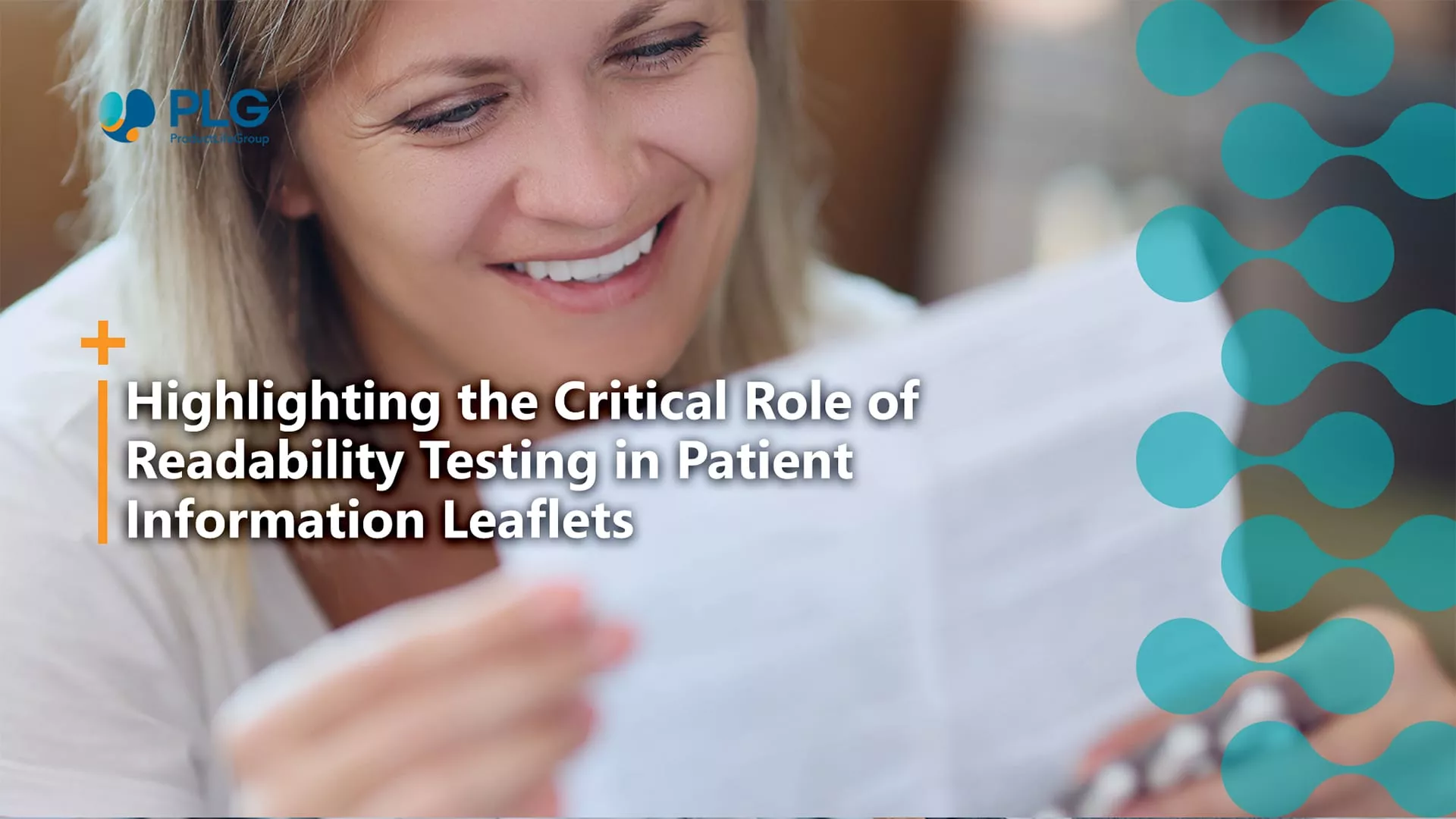
The Critical Role of Readability Testing in Patient Information Leaflets
14 october 2024

Patient information leaflets (PILs) play a crucial role in ensuring the safe and effective use of medicines. They provide vital information about dosage, side effects, interactions, and storage, helping patients understand how to use a medicine correctly. For pharmaceutical companies, readability testing of these leaflets is not just a regulatory requirement, but also a critical component of patient safety and product success.
Enhancing Patient Understanding
One of the primary goals of readability testing is to ensure that the language used in PILs is accessible to all patients, regardless of their literacy level. A leaflet full of medical jargon or complex language can confuse patients, leading to medication misuse, side effects, or reduced efficacy. By testing readability, companies can simplify the language, ensuring patients from diverse backgrounds can easily comprehend the instructions.
Improving Medication Adherence Through Clear Patient Guidance
When patients understand how to take their medication, they are more likely to follow the prescribed regimen. Clear instructions help improve adherence, leading to better health outcomes and minimizing the risk of complications or hospitalization. Readability testing identifies areas where the leaflet might be unclear, allowing pharmaceutical companies to revise the content for maximum clarity and precision.
Ensuring Compliance: Effective Readability Testing
Regulatory bodies, such as the European Medicines Agency (EMA) and the Medicines, and Healthcare products Regulatory Agency (MHRA), mandate that pharmaceutical companies provide clear and understandable patient information. They require pharmaceutical companies to conduct readability testing, often referred to as “user testing,” as part of their marketing authorization process. According to EMA guidelines, these tests must demonstrate that “a patient can find, understand, and act upon the information” in the PIL. The test must involve at least 20 participants representing the target population, ensuring that the leaflet is understandable to a wide range of patients, including those with lower literacy levels. Companies must revise the PIL based on feedback to ensure it meets the EMA’s high standards for clarity.
What New Turkish Regulations Mean for Pharma Companies
The Turkish Medicines and Medical Devices Agency (TİTCK) has recently updated its regulations concerning readability testing. TİTCK has adopted stricter rules, aligning more closely with EMA standards. These changes emphasize the need for pharmaceutical companies to conduct comprehensive user testing to ensure the leaflet is accessible to a broad audience. Like the EMA, the TİTCK now requires proof that patients can easily understand a PIL, reinforcing the importance of patient-centric communication. Moreover, as of December 31, 2024, the readability test conducted abroad and its Turkish translation will not be accepted, and the readability test conducted domestically must be submitted. In addition, for human medicinal products whose licensing process is ongoing and for which a license has not been issued until December 31, 2024, even if the readability test conducted abroad and its Turkish translation have been submitted before, the readability test conducted domestically must be submitted as of December 31, 2024.
Ensuring Clear Patient Communication with PLG’s Readability Expertise
Conducting readability testing requires expertise in both regulatory compliance and patient communication. ProductLife Group (PLG) assists pharmaceutical companies in properly conducting these tests, offering tailored services that ensure PILs meet regulatory requirements while being understandable to potential patients. As regulatory standards evolve, particularly in markets like the EU, UK, and Turkey, PLG adapts its processes to meet these new demands, ensuring pharmaceutical companies remain compliant and provide the highest standard of patient information.
This article was written by:
Yulia Alshibaya
Readability Testing Team Lead
ProductLife Group
Register to our news and events
Go to our Events to register
Go to our News to get insights
